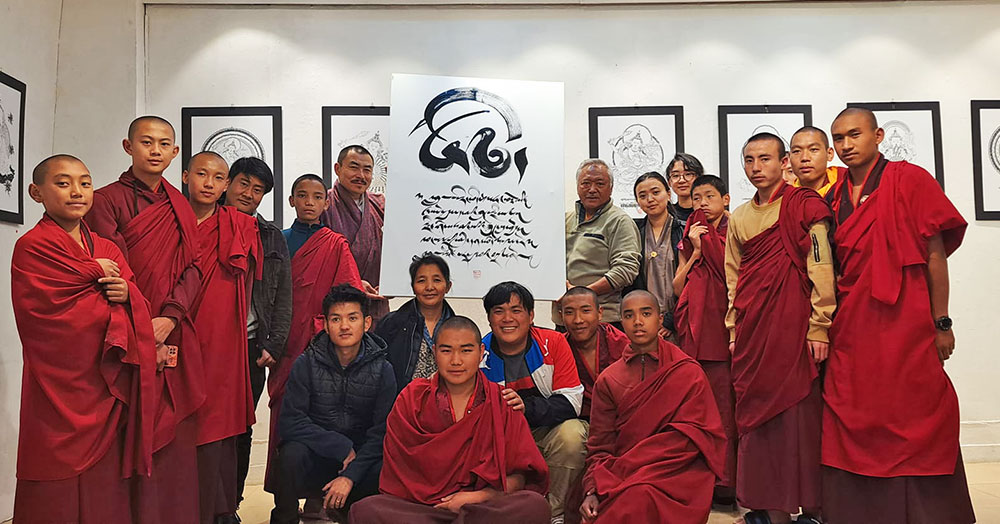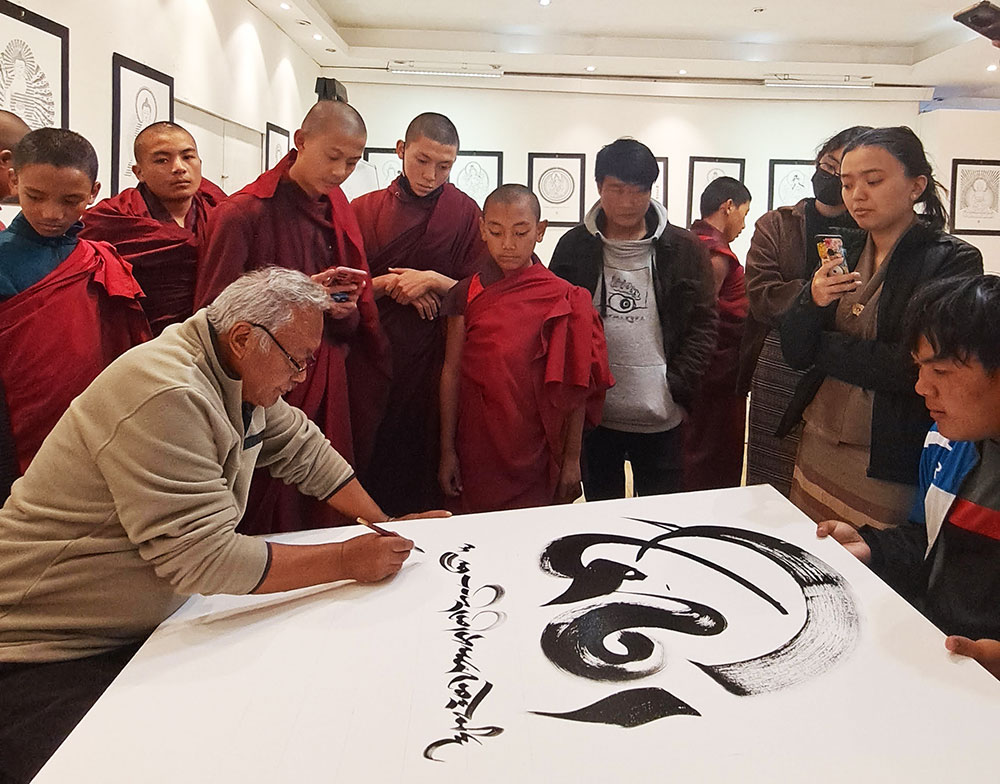Jigmi Wangdi
VAST Bhutan organised a week-long workshop titled ‘Dharma Art Calligraphy’ which also hosted the Master Calligrapher Jamyang Dorjee Chakrishar, a revered artist from India.
During the workshop that ended yesterday, the art of calligraphy, albeit a new concept in Bhutan, gathered huge interest from the 30 participants.
Jamyang Dorjee Chakrishar came last year to Bhutan for the International Vajrayana conference and held an exhibition.
“His Majesty The King was kind enough to grace the exhibition. It was then that His Majesty asked me if I could come again to inspire the younger generation. That would be the main reason for this workshop to happen,” he said.
Jamyang Dorjee said that the workshop aimed to introduce calligraphy to the youth. “The style I use is called more cursive kyug script, allowing more liberty to artists. We wanted to see if this style can be incorporated into kyug form.”

Artwork created by the participants will be exhibited tomorrow
He added that another aim was to see if Bhutanese people used the Dzongkha scripture as a signature instead of English.
“In the five days, I am confident that we have achieved the aims. All the participants know how to write the kyug style, not only in Dzongkha but also the Tibetan calligraphy. We were successful in incorporating the style in art form and the participants can do it,” Jamyang Dorjee said.
The participants have also learnt how to sign using kyug form in Dzongkha.
Jamyang Dorjee said that some of the participants did not look too happy. “Today all of them are enjoying because they have understood the essence of writing.”
He said that the workshop has been an eye-opener because the young participants showed great enthusiasm to learn the art. “There are many styles of writing in the Tibetan scripts, and this belongs to Bhutan as well. We must use these styles. Therefore, the extension of their knowledge today will make their roots stronger and have greater appreciation for Dzongkha.”
Pema Yangdon, an interior designer, was a participant at the workshop. She said that art has always been her passion and came to the workshop to learn newer styles and ideas.
“This workshop was the first of its kind here. I realised that we can do so much with our Dzongkha scripts after learning the Tibetan calligraphy and the experience was inspiring,” she added, “The workshop also gives us an idea of what we can do with our Dzongkha scripts, especially when the youths are lagging with the language.”
Pema said that she along with some other participants talked about starting sessions on dzongkha calligraphy after the workshop and bringing in other people who are interested to re-learn dzongkha.
Karma Kesang, a 20-year-old monk who attended the workshop, said that he has become more confident towards working more on building his skill in the art.
“Master Jamyang Dorjee himself took so much time and experience to reach the level he is at. This made me confident to know that if I too work towards enhancing my skills, I can someday become even better than him,” Karma said.
The young monks who attended the workshop said that they would come more in the future to similar programmes if they were given the opportunity.
A 52-year-old Bhutanese calligrapher, Karma Jurmey, said that the calligraphy workshop can help change the misconception of the Dzongkha language among the people.
“Right now, when we say Dzongkha, most people think of monasteries or Buddhist texts. So, we need to show that Dzongkha can also be used similarly to English,” the self-taught calligrapher said.
But after the workshop, he said that he wanted to focus completely on the art.
“A wake-up call for me was when I realised the stereotype most parents have about the youth, especially when they say that the youths don’t prefer Dzongkha. However, after seeing the interest of the participants and interacting with them, I understood that the youths are interested in learning. The only thing is they don’t get enough frequency with the language,” he said.
The workshop is organised in collaboration with the Indian Embassy with funding support from India-Bhutan Foundation. The artwork created by the participants will be exhibited tomorrow.


